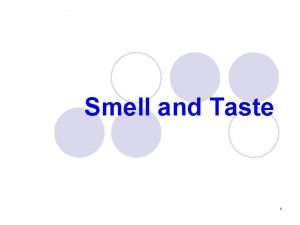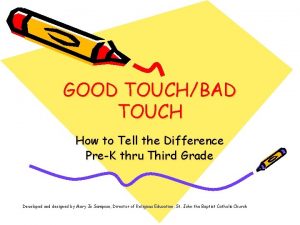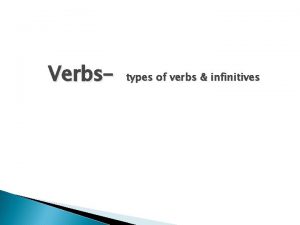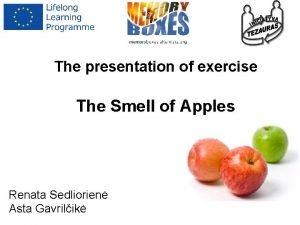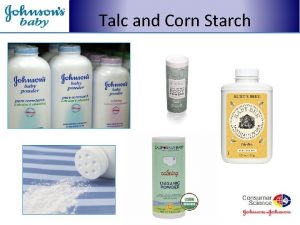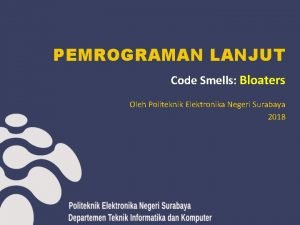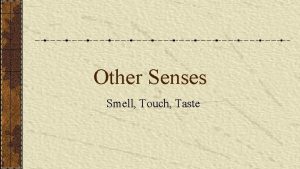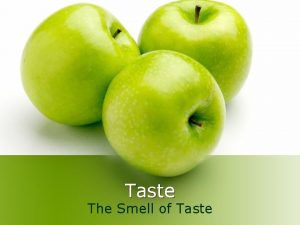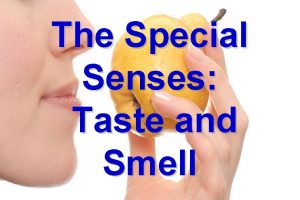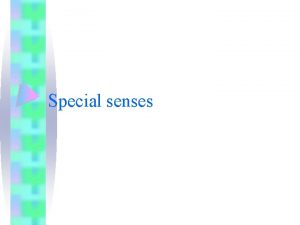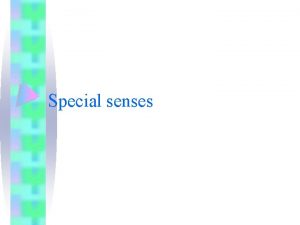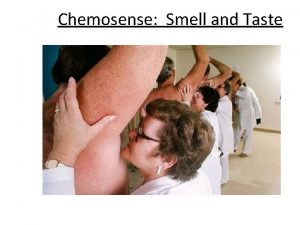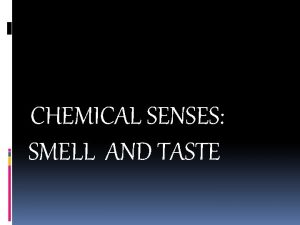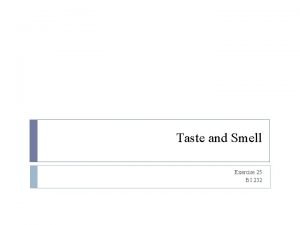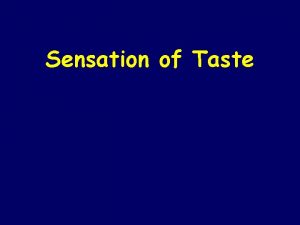Touch Taste Smell Touch is essential to development











- Slides: 11

Touch, Taste, Smell

Touch is essential to development ◦ Premature babies gain weight faster when given massages ◦ Infant rats deprived of mothers’ grooming touch have stunted growth ◦ Monkeys deprived of mothers touch are traumatized

Sense of Touch � Combination of four skin senses: pressure, warmth, cold and pain ◦ Controlled by somatosensory cortex in parietal lobes ◦ Sensitivity varies between body parts

How do we sense pain? �Gate-Control Theory ◦ There are pain gates in the spinal cord (open=pain, closed=no pain) ◦ Different types of stimulation cannot be sent through the gates simultaneously ◦ Conflicting stimulation closes the gate �Acupuncture, ice, rubbing

Pain Control � Pain can be treated both physically and psychologically -relaxation, distraction -Lamaze, hospital study (Ulrich 1984)

Sense of Smell � Olfaction ◦ Receptor cells in the olfactory membrane transduce chemicals from the air ◦ Olfactory bulb has a direct link to limbic system (memory and emotion) through olfactory nerve ◦ Pheromones chemical messengers processed through smell


Sense of Taste � Gustation: transducing chemicals from food ◦ Gustatory (taste) receptor cells found in taste buds ◦ taste buds embedded in papilla (bumps) across the tongue sense all flavors ◦ 5 types of taste buds (sweet, sour, salt, bitter, umami (savory) ◦ Flavor=smell+taste �Why did we develop a sense of taste?

Each bud contains elongated taste cells that respond to sweet, salty, sour, bitter or umami (savory).

Kinesthetic Sense �Tells the brain where the parts of the body are relative to one another �Controlled by sense receptors on the joints and muscles ◦ damage=apraxia: inability to manipulate objects

Vestibular Sense �Tells the brain about the position of the head relative to the body and ground/aids in balance �Controlled by fluid-filled sacs in the semicircular canals of the inner ear �Connects to cerebellum and eyes


